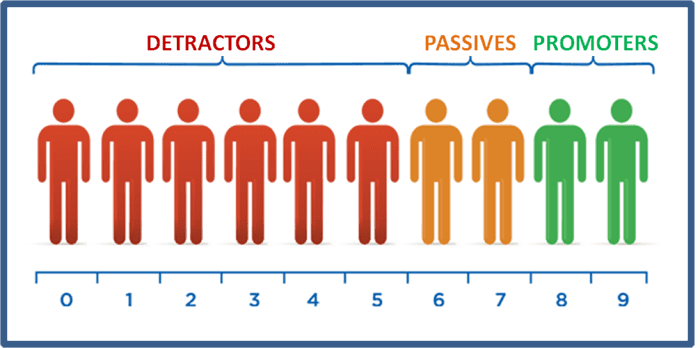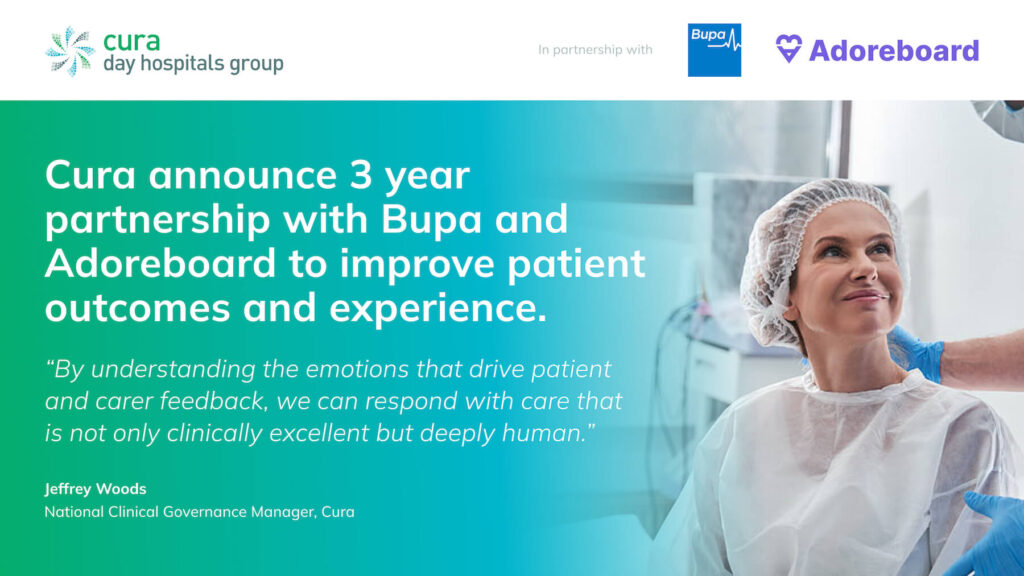What if you had a measure that could reliably tell you which customers would recommend your company to a friend? What if this measure could also enhance other useful and invaluable customer loyalty measures? And what if this measure boiled its succulent insights into a single score?
The Net Promoter Score (NPS) aims to diligently deliver on these 3 objectives. Yet the rise of the “activist customer” – whereby customer feedback and customer decision operate in a more instantaneous and active environment – means customer journey to purchase, retention and loyalty has been dramatically been disrupted…
The challenge for marketers operating in this new context is the ability to quickly identify key drivers in the customer journey and positively influence these immediately. Marketers need to adopt an activist customer mindset to avoid surprises at the end of quarter with survey findings such as NPS revealing poor performance.

Image via Ethical Consumer
Based on our experience working with global brands, we advocate a multi-metric model approach whereby metrics such as NPS are combined with Adoreboard’s advanced text analysis to provide a complementary and real-time progress report on advocates and detractors. Analytics together with content and personalised marketing can play a role in shifting customer opinion and creating a new customer journey and experience.
But it needs to happen now. Not next quarter.
An introduction to NPS – what is it?
NPS is a metric which measures the likelihood of customersrecommending a company or product to someone else. It asks a simple question to arrive at this important insight:
How likely is it that you would recommend [brand or company X] to a friend or colleague?”
Answers for this question are given on an 11 point scale with 0 denoting NO willingness to recommend, 5 denoting a neutral willingness to recommend and 10 denoting an extremely likely willingness to recommend.
This scale then classifies respondents into several groups. Those who scored 9 or 10 are called ‘Promoters’, while those who scored 0-6 are called ‘Detractors’.

An NPS score is calculated by subtracting the percentage of Detractor respondents from the percentage of Promoter respondents.
From this calculation, NPS can add to a company’s ability to grow. By knowing the proportion of customers who would likely recommend your company via word-of-mouth, you will be able to quickly and cleanly see how your enterprise can grow and how much effort you can invest to grow this subset of customers.
The Rise of Horizontal Influence
NPS aims to promote company growth through one of the staples of human communication: word-of-mouth. Word of mouth has defined the success of stellar 21st century companies like Apple. Essentially, if companies cultivate the subset of customers who would likely recommend their product, those customers will recommend the product to their friends. They will do so in ‘natural’ settings like lunch breaks and on nights out. This recommendations will likely be taken more seriously and cognitively processed deeper than traditional advertising given the authentic nature of the recommendation. Customers will sell the products of the company on your behalf to their family and friends.

Image via Piece of Cake Communications
This is based on a trend we’ve identified known as horizontal influence, a technical term referring to how consumers now control when, where and how they consume media, as well as making decisions about purchasing.
In summary, consumers are less trustful of brands.
As a result consumers are more active in seeking out information on brands on review sites, expressing their thoughts online or providing personal recommendations. This activism has made it harder for brand ‘concepts’ to resonate as customers seek out more genuine and authentic brand experiences.
A New Approach?
With the key benefits of NPS, does it translate into tangible business results? Academic research into this very question has uncovered interesting results about the effectiveness of NPS. One article published in the prominent Journal of Marketing attempted to test the hypothesis that the NPS was the “single most reliable indicator of a company’s ability to grow”.
Deploying over 15,500 interviews from 21 companies, the study compared NPS scores with other customer loyalty measures like NCSB (Norwegian Customer Satisfaction Barometer) score, overall satisfaction, ACSI and recommend intention. All these measures were correlated with the company’s revenue growth rate.
Their results showed that NPS did not significantly correlate with any firm-type growth rate.
But more tellingly, few of the measures when analysed on their own had a high or significant correlation with firm growth rate.
This implication – that measures on their own do not predict a company’s growth rate – was further supported by another research article.
In this case a piece published in the Journal of Database Marketing & Customer Strategy Management in 2008 summarised the previous article and incorporated another one testing whether, “NPS is superior to customer satisfaction and the latter has no link to growth”.
That one compared NPS with ACSI and growth. ACSI outperformed NPS on two of the three tested correlations, showing NPS is not superior to customer satisfaction and that the latter DOES have a link to growth.
Another approach?
Near the end of the later article the authors report an experiment where they compared various customer loyalty matrices against customer retention in industries. In two industry models containing several variables, there was an improvement of nearly 20% from a single-metric model (employing only one metric) to the multi-metric model (employing several matrices).
This result shows clear evidence that using more than one measure of customer loyalty (or any complicated thing you want to measure) provides more and better information about customer loyalty.
When it comes to research accuracy, more is more effective.
The reason for this is that more metrics will provide a more detailed and nuanced look into something as complex as customer loyalty and the likelihood to recommend.
Adoreboard can fill that gap by combining with NPS and other matrices to help explain and predict a company’s growth rate. NPS already analyses customer tendency to recommend, Adoreboard augmented with it provides a deeper layer of analysis of the emotional state and motivation of customers.
This analysis captures valuable information that the NPS leaves out.
By combining these different measures together, a user would be presented with an analysis greater than the sum of its parts.

Image via Lifestyle 4 Tomorrow
The unique and, sometimes, disparate matrices and measures would be combined to paint a greater picture of something as complex as customer loyalty and the intention to recommend a product to a friend.
Three practical examples:
1. Working with a global technology provider, Adoreboard was deployed to provide a real-time metric of the voice of the customer. The Adorescore our metric for customer advocacy alerted to a significant reputational issues resolved in a way which increased customer advocacy by 17 points.
2. Working with a global airline, Adoreboard was deployed to use predictive analytics to enhance personalised marketing by enhancing the emotional impact of content resulting in a 13% increase in click through rates on online communication.
3. Working with a global law firm, Adoreboard was deployed to measure its online reputation compared to competitors uncovering an insight to drive advocacy and a competitive advantage when recruiting for new talent.
In summary, we have explained what the NPS is, its advantages and disadvantages and have provided an example of how Adoreboard can compliment NPS for more accurate results.
In an era of big data,increased complexity and activist consumers it is quintessential that the matrices used are as detailed and multifaceted as the phenomena they claim to measure. And delivered now. Not next quarter.
If you’d like to test Adoreboard get in touch or book a 15 minute call with our CEO.




